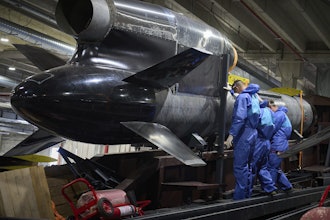Artificial intelligence has found its way into cars, manufacturing equipment, home appliances and even aircraft.
The Army, in a move that I’m sure has been covered by some low-budget action movie, is looking to integrate the technology into missiles. The goal would be the ability to fire a missile that could basically find its own target. While infrared sensors have successfully been embedded into smaller projectiles in allowing them to detect tanks and similar vehicles at ranges of about 200 meters, this iteration would ideally work for longer distance targets.
It would also differ from laser-guided weapons in that a human providing an aiming point from the ground would not be needed.
Dubbed the Cannon-Delivered Area Effects Munition, the Army hopes to have a working prototype by 2021. The most challenging portion of developing the missile’s intelligence, or software, will most likely deal with developing algorithms that will allow the missile to distinguish between friendly, civilian and opposing force targets in crowded combat zones.
In an attempt to quell concerns over the possibility of a rogue Skynet-like missile going haywire, a spokesperson for the U.S. Army was quoted in a Digital Trends report as saying that, “This is not an autonomous weapon, nor is it intended to be. We seek an advanced capability for a round — once fired — to continue pursuing a target despite the types of interference that might cause it to pursue something else.“
Sorry, but unless these missiles are going to have some sort of remote driver piloting them, it kind of sounds autonomous to me.
Perhaps the biggest benefit to such a weapon would be the ability to replace clustering munitions that scatter multiple explosive devices the size of a grenade over wide areas. In addition to potentially dumping and leaving unexploded ordinance, these types of weapons can also hit innocent bystanders as well as the enemy.






















